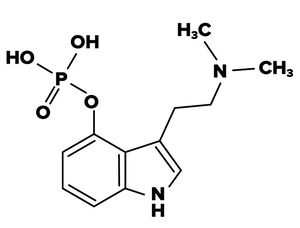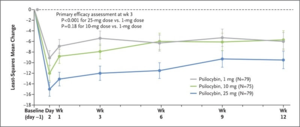Psilocybin
The active psychedelic ingredient (when converted to psilocin) found within magic mushrooms. Psilocybin has been found to be an effective cure of treatment resistant depression.
Psilocybin (Figure 1) degrades quickly into its active metabolite psilocin after ingestion. Both psilocin and psilocybin exhibit affinity for a range of serotonin receptors (5-HT1A/B/D/E, 2B, 5, 6, 7) with high affinity for the 5-HT2A receptor.
History
A chemical found in more than 100 mushroom species and used for millennia in Indigenous communities in Mexico and Central America as part of celebrations, healing rituals, and religious ceremonies. Investigated by psychiatrists in the 1950s and 1960s before the 1971 Controlled Substances Act designated it a Schedule I drug.
Effects
Increased positive mood, hallucinations, and an inability to discern fantasy from reality. Causes alterations of thought and of the perception of time. Panic reactions and a psychotic-like episode can occur, particularly at a high dose.
Depression Dosage
The dose to cure depression has seen a dose dependency 25mg is a better dose than lower doses such 10mg or microdosing[1] (see Figure 2). This equates to 10–20µg l–1 psilocin in plasma, which corresponds to ~60% occupancy of serotonin 2A (5-HT2A) receptors in the neocortex of humans.[2] Psychological effects start around 10–40 min after ingestion and last for 2–6 h.
Reference
- ↑ Single-Dose Psilocybin for a Treatment-Resistant Episode of Major Depression. Guy M. Goodwin. First published November 3, 2022. N Engl J Med 2022; 387:1637-1648. DOI: 10.1056/NEJMoa2206443. Accessed on 5th November via https://www.nejm.org/doi/full/10.1056/NEJMoa2206443
- ↑ Psychedelic effects of psilocybin correlate with serotonin 2A receptor occupancy and plasma psilocin levels. MK Madsen Neuropsychopharmacology, first published 2019. Accessed on 5th November 2022 via https://www.nature.com/articles/s41386-019-0324-9

